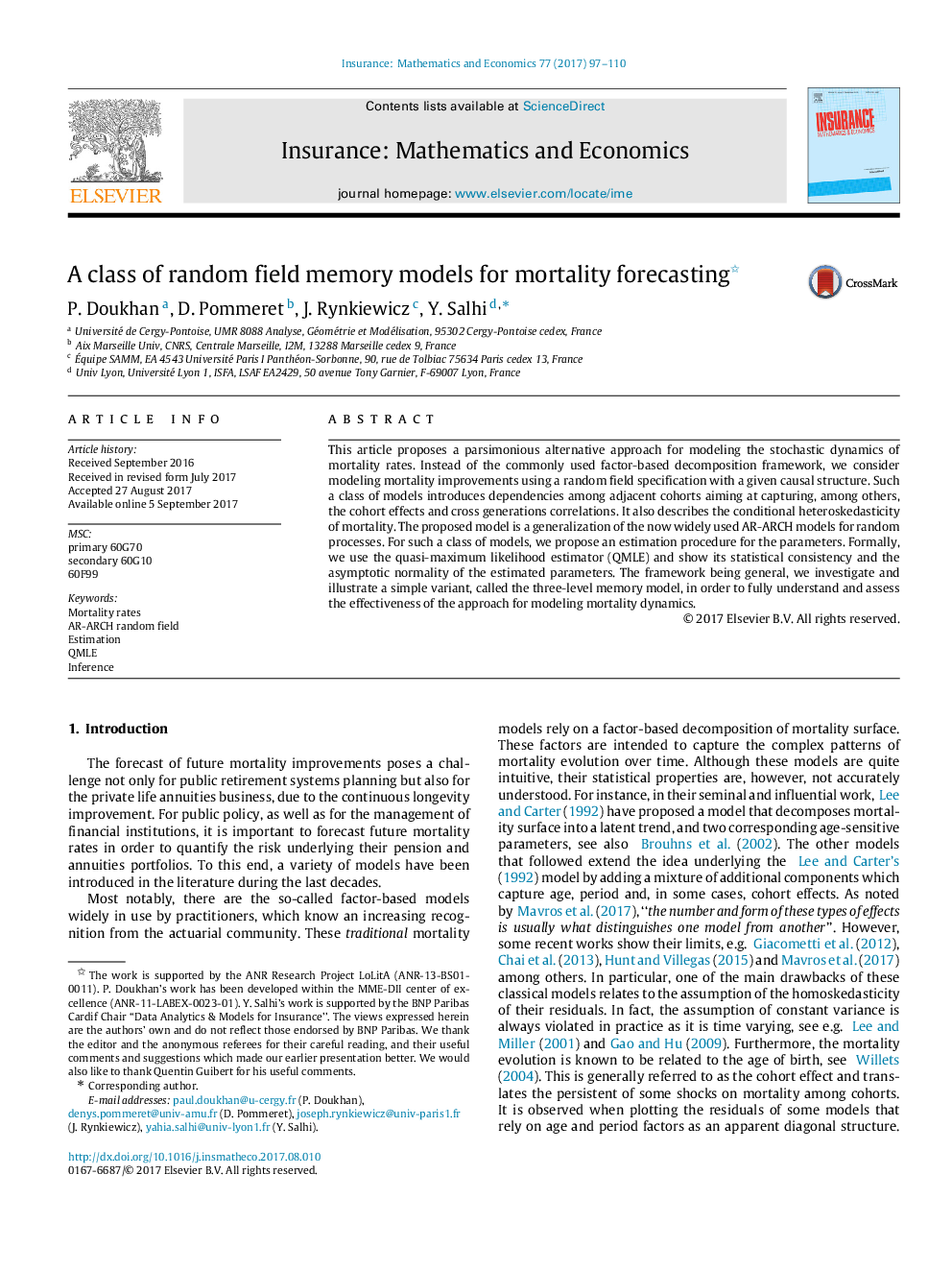| Article ID | Journal | Published Year | Pages | File Type |
|---|---|---|---|---|
| 5076102 | Insurance: Mathematics and Economics | 2017 | 14 Pages |
This article proposes a parsimonious alternative approach for modeling the stochastic dynamics of mortality rates. Instead of the commonly used factor-based decomposition framework, we consider modeling mortality improvements using a random field specification with a given causal structure. Such a class of models introduces dependencies among adjacent cohorts aiming at capturing, among others, the cohort effects and cross generations correlations. It also describes the conditional heteroskedasticity of mortality. The proposed model is a generalization of the now widely used AR-ARCH models for random processes. For such a class of models, we propose an estimation procedure for the parameters. Formally, we use the quasi-maximum likelihood estimator (QMLE) and show its statistical consistency and the asymptotic normality of the estimated parameters. The framework being general, we investigate and illustrate a simple variant, called the three-level memory model, in order to fully understand and assess the effectiveness of the approach for modeling mortality dynamics.
